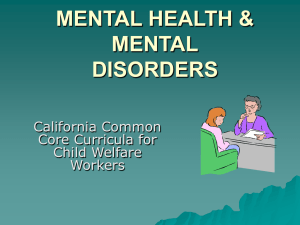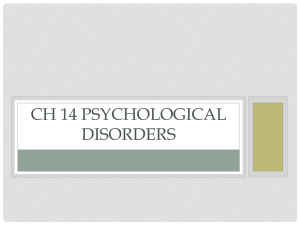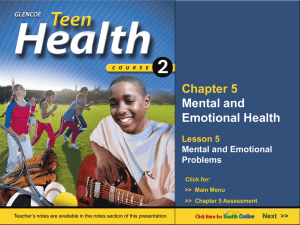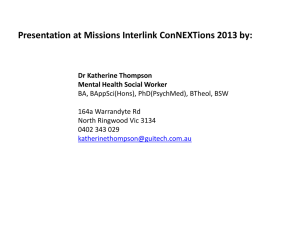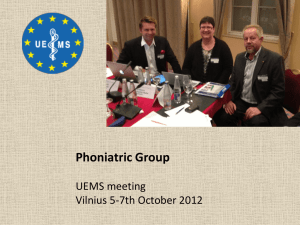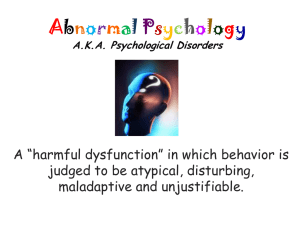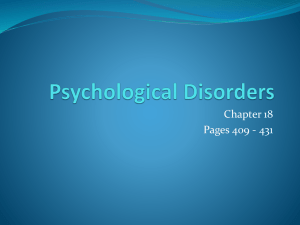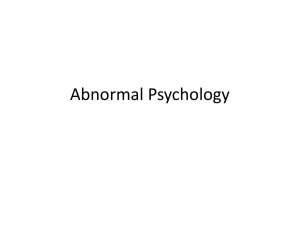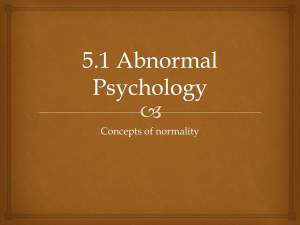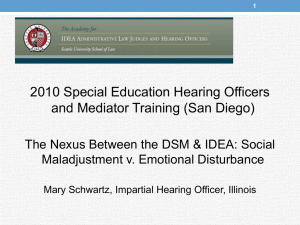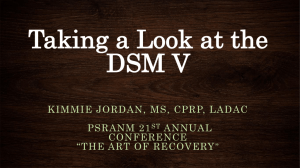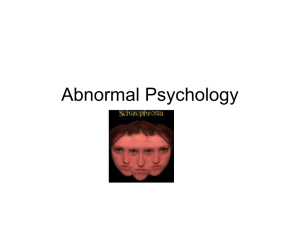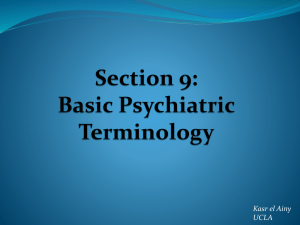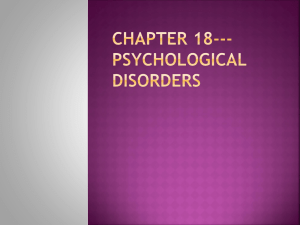Chapter 9 Lesson 1
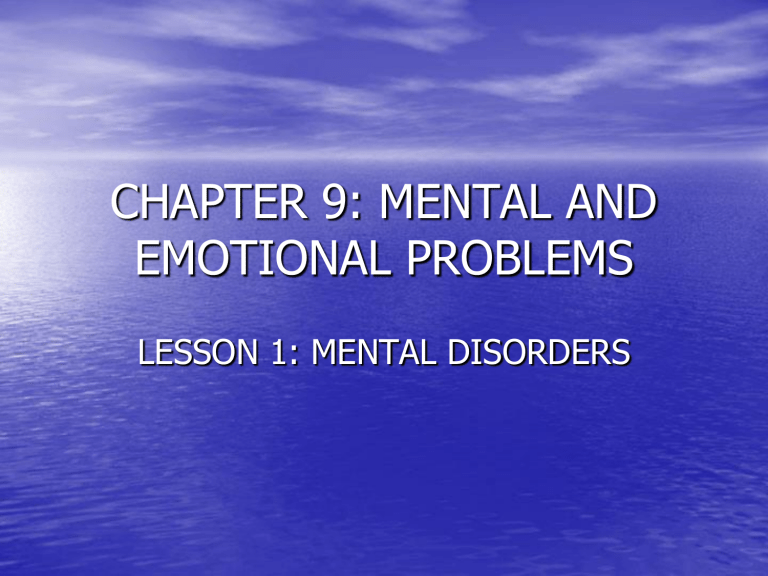
CHAPTER 9: MENTAL AND
EMOTIONAL PROBLEMS
LESSON 1: MENTAL DISORDERS
What are Mental Disorders?
• Mental disorder- an illness in the mind that can effect thoughts, feelings, and behaviors of a person, preventing him or her from leading a happy, healthful, and productive life.
• 54 million people are affected by some form of mental disorder.
• Only one-third of those receive the help they need.
• Why would someone not receive help?
Two Classifications of Mental Disorders:
• Organic Disorders- caused by a physical illness or an injury that affects the brain.
– Brain tumors, infections, chemical imbalances, exposure to drugs and toxins, or injuries resulting in brain damage.
• Functional Disorders- have a psychological cause and do not involve brain damage.
– May result from heredity, stress, emotional conflict, fear, ineffective coping skills.
– Often are tied to disturbing events in childhood, such as abuse, serious illness, or traumatic death of a close relative.
– Also tied to recent events such as divorce, economic hardships, or natural disasters.
TYPES OF MENTAL DISORDERS:
(There are over 300 types!)
ANXIETY DISORDERS:
• A condition in which real or imagined fears are difficult to control.
• Characterized by chronic fear.
• People arrange their lives to avoid situations that make them feel anxious or fearful.
Four Classifications of Anxiety Disorders:
• PHOBIAS:
– A strong and irrational fear of something specific.
– People with phobias avoid the object at all costs.
– May make them a prisoner of their own home.
– Examples
Four Classifications of Anxiety Disorders:
• OBSESSIVE-COMPULSIVE DISORDER
– Being trapped in a pattern of repeated thoughts or behaviors.
–
–
Obsessive refers to persistent, recurrent, and unwanted thoughts that prevent people from attending to normal daily activities.
Compulsive refers to repeated, irresistible behaviors.
– Example
Four Classifications of Anxiety Disorders:
• PANIC DISORDERS:
– Suffer from sudden, unexplained feelings od terror.
– “Panic attacks” are accompanied by symptoms such as trembling, a pounding heart, shortness of breath, or dizziness.
– Attacks may occur at any time or place, but most are triggered by a particular object, condition, or situation.
Four Classifications of Anxiety Disorders:
• POST-TRAMATIC STRESS DISORDER:
– A condition that may develop after exposure to a terrifying event that threatened or caused physical harm.
– Common after personal assault, rape, disasters, plane crashes, or military combat.
– Symptoms are flashbacks, nightmares, emotional numbness, sleeplessness, guilt, and problems with concentration.
– The disorder may arise weeks or months after the event that caused it.
TYPES OF MENTAL DISORDERS:
(Continued)
MOOD DISORDERS:
• An illness often with an organic cause, that involves mood extremes that interfere with everyday living.
• The emotional swings of mood disorders are extreme in both intensity and duration.
(not your normal ups and downs)
2 Types of Mood Disorders:
• Clinical Depression:
– Feelings of sadness, hopelessness, or despair last for more than a few weeks and interfere with daily interests and activities.
– Can affect concentration, sleep, performance at school or work, or handle everyday decisions and challenges.
– Clinical depression results from a chemical imbalance that a person cannot overcome without professional help.
– Depression often runs in families and can be biologically based.
• Bipolar Disorder:
– AKA manic-depressive disorder, causes extreme mood changes, energy levels, and behavior.
– Manic “highs” and depressive “lows”----Figure 9.1 pg 227
TYPES OF MENTAL DISORDERS:
(Continued)
CONDUCT DISORDERS:
• A pattern of behavior in which the rights of others or basic social rules are violated.
• Lying, theft, aggression, violence, truancy, arson, and vandalism.
• More common amongst makes than females.
• Although they may act “tough” usually they have low self-esteem.
• May also have symptoms of other mental disorders including anxiety, depression, and substance abuse.
• With out treatment they may be unable to the demands of adulthood and continue to have problems relating to others, holding a job, and behaving in appropriate ways.
TYPES OF MENTAL DISORDERS:
(Continued)
SCHIZPHRENIA:
• A severe mental disorder in which a person loses contact with reality.
• Symptoms include delusions, hallucinations, and thought disorders.
• Caused by a combination of genetic factors and chemical and structure changes in the brain.
• Sufferers have difficulty understanding between real and imaginary events.
• A common misconception is that they have split personalities or are a danger to themselves or others.
• Example
TYPES OF MENTAL DISORDERS:
(Continued)
PERSONALITY DISORDER:
• People with personality disorders think and behave in ways that make it difficult for them to get along with others.
• Usually in constant conflict with othersfamily, friends, teachers, coworkers, or supervisors.
3 Types of Personality Disorders:
• Antisocial Personality Disorder:
– Tend to be irritable, aggressive, impulsive, and violent.
– Many times they are unable to show remorse for their behavior.
• Borderline Personality Disorder:
– Frequently experience a series of troubled relationships.
– Tend to engage in high-risk activities and have poor self esteem.
– Fear abandonment but often lash out violently at those they need the most.
• Passive-Aggressive Personality Disorder:
– Often uncooperative.
– Resent being told what to do, yet rely on others’ direction.
– Angry over issues of control, they show their anger indirectly.
– For example: If they do not want to take part in an activity they may forget to show up or may arrive late and leave early.





